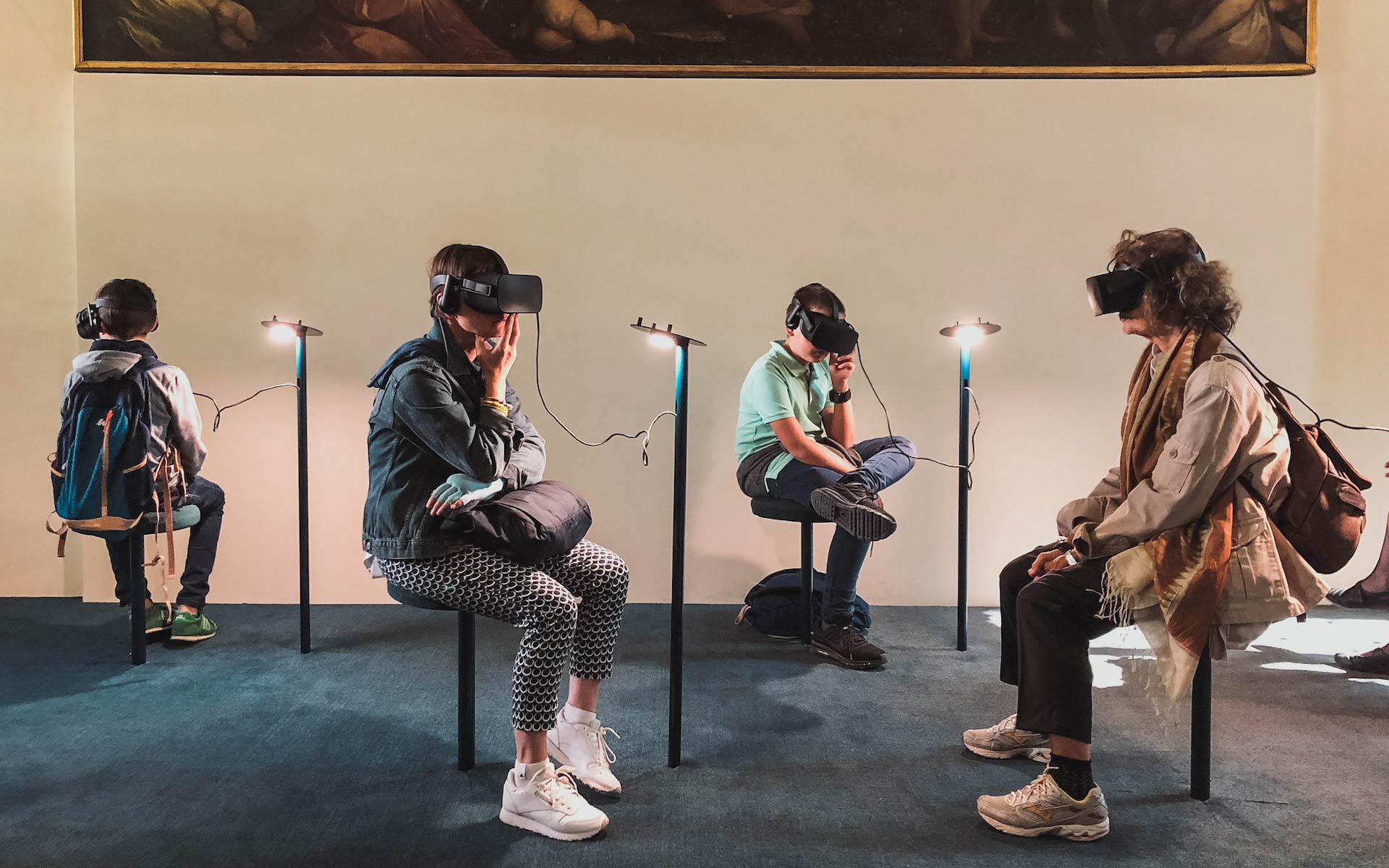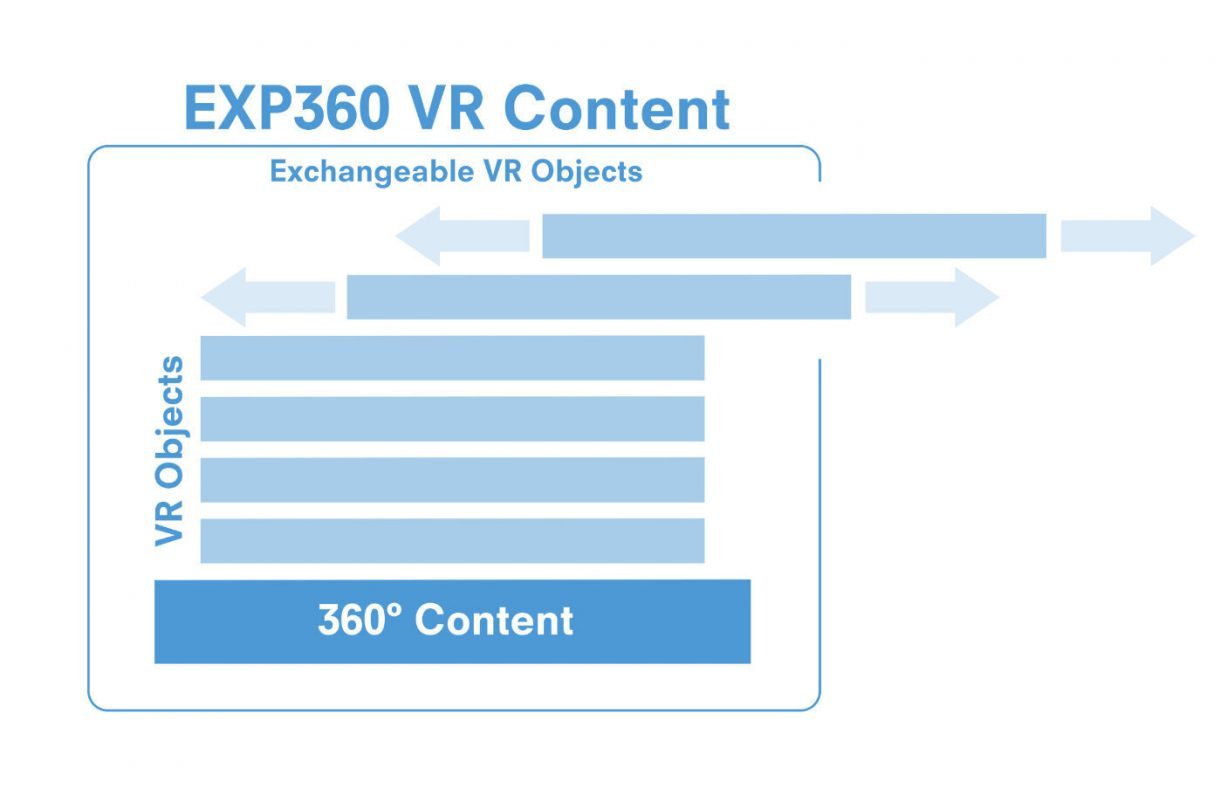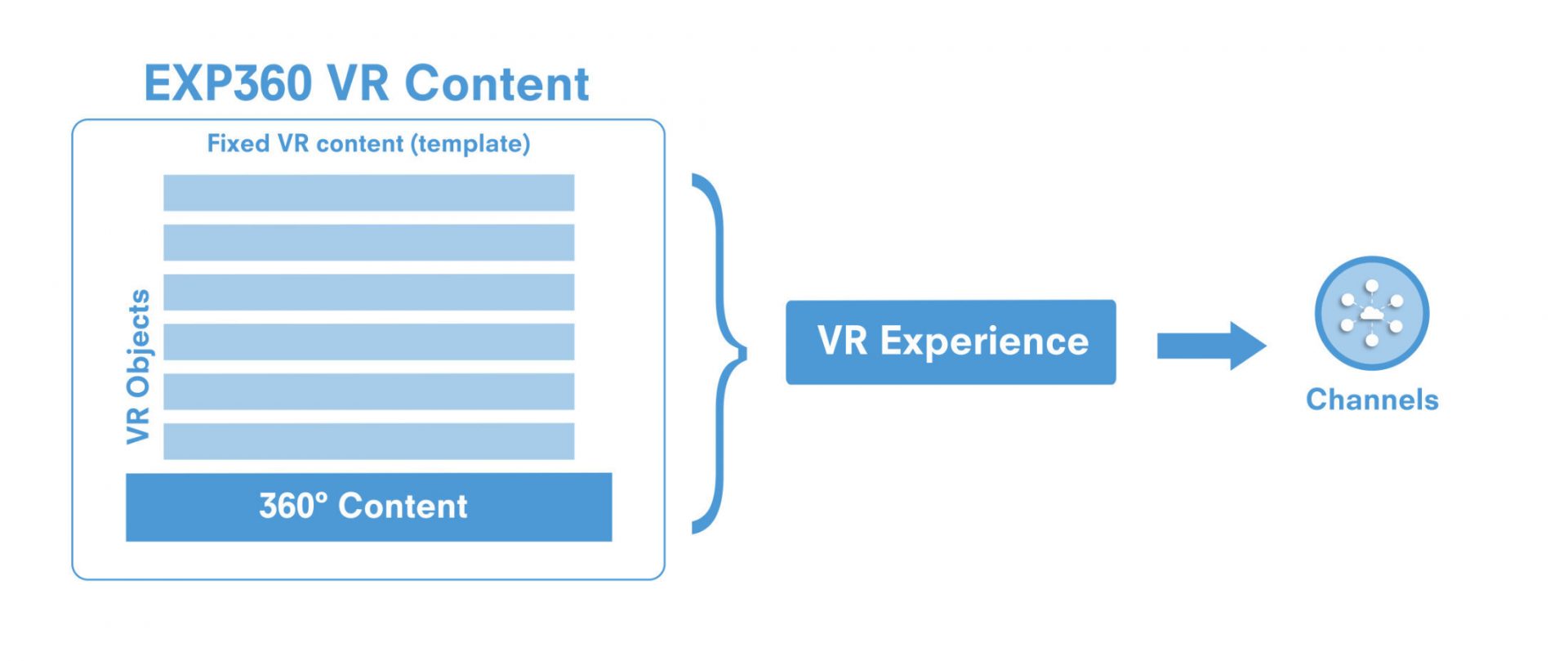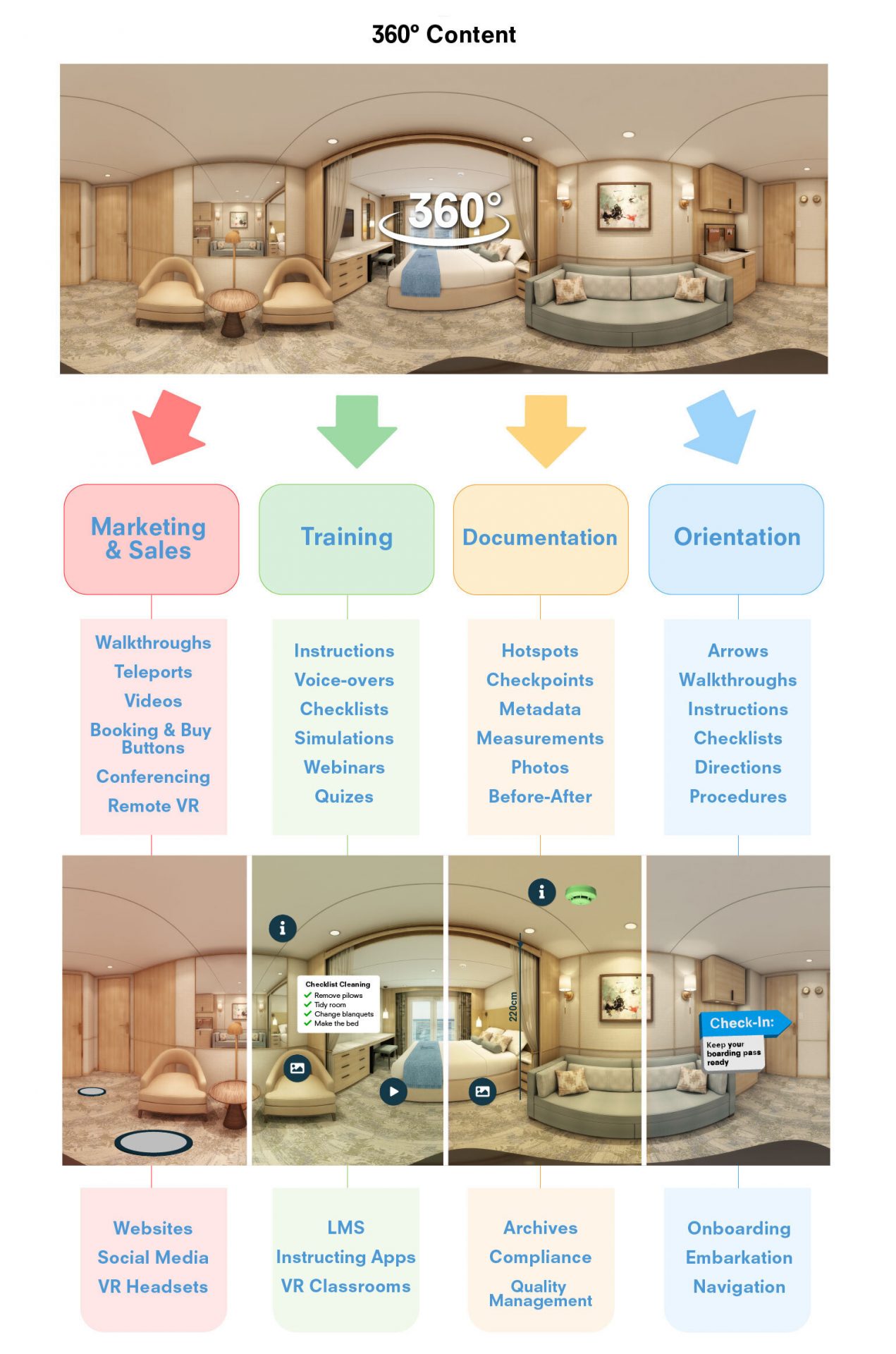Table of Contents
Introduction
In recent years, virtual reality (VR) has become an increasingly popular tool for organizations to train employees, market products and services, and create engaging customer experiences. However, despite its benefits, many organizations still struggle to fully leverage the potential of VR due to the cost and time investment required for content creation and the need for specialized expertise.
By adopting a multi-use of content approach to VR content and sharing SaaS VR software licenses across departments, organizations can significantly reduce costs and improve efficiency while still delivering high-quality VR initiatives. This approach allows organizations to create VR content once and use it across multiple departments and use cases, resulting in significant time and cost savings.
In this post, we will explore the benefits of a multi-use approach to VR content creation and sharing VR software licenses, and how organizations can implement this approach to maximize the potential of their VR initiatives.

Cost Benefits
Cost reduction for content creation
Content creation for the cruise industry and hotels can be a costly affair. In order to create 360 / VR content, management need to block off cabins or hotel rooms, which can result in loss of revenue. Additionally, planning and coordinating the shoot, hiring professional photographers with 360 equipment, and post-production work can all add up to a significant cost.
However, by adopting a multi-use approach to 360 / VR content, organizations can significantly reduce these costs. Instead of creating content specifically for one department or use case, the same content can be repurposed for multiple departments or use cases, leading to cost savings. This approach also allows organizations to better utilize their existing resources, such as professional photographers and equipment, which can reduce the need for additional external resources.

With an EXP360 approach to content creation, organizations can produce and upload VR/360 content that serves as a basis for multiple use cases across different departments. By adding or replacing VR objects, relinking, and baking them into new VR experiences, teams can streamline the creation process and make better use of existing resources. This not only saves time and money, but also leads to a higher success rate for VR initiatives within the organization.

In the EXP360 ecosystem, the multi-use approach means that the VR content is created and then repurposed for different use cases. The content is then pushed out on various VR channels, including web integration, share pages, VR headsets, mobile apps, virtual event platforms, e-learning systems, and VR e-learning systems. This allows organizations to use their VR content for a range of purposes, ultimately being able to reach a bigger and more flexible end-user group.
By repurposing a set of 360 VR content elements and adding features such as hotspots, arrows, buttons, slides, voice overs, subtitles, and narrative building, organizations can change the purpose and use case of the same VR/360 content. This multi-use approach enables different departments, such as marketing, sales, training, archive, and guest experience, to use the same content for different purposes and distribute them on various channels to reach their peers more effectively.
For instance, cruise lines can reuse their high-quality marketing VR 360 content for crew training, documentation, wayfinding, or enhance the marketing content for charters and rebranding with white-label logos.

Furthermore, by using a centralized VR content repository, different departments within an organization can access and reuse existing content, saving both time and money. This also allows for consistent branding and messaging across different departments and use cases, leading to a more streamlined and cohesive VR strategy.
Overall, taking a multi-use approach to 360 / VR content can provide significant cost benefits for organizations, allowing them to make the most out of their resources and streamline their VR initiatives.
Budget sharing for VR SaaS software license sharing across departments
Sharing SaaS VR software licenses across different departments within an organization can significantly reduce the overall cost of VR initiatives. Rather than each department investing in their own VR software vendor, resources can be concentrated and shared, leading to substantial cost savings.

Time Benefits
Working with the same VR SaaS vendor, there are multiple opportunities for organizations to save time by concentrating resources.
- One staff position can grow into a single-point of contact for the entire organization for this VR SaaS vendor while training costs are lower than training each: By having one person dedicated to managing the VR SaaS vendor, the organization can ensure that all departments are using the same software and following best practices. This also reduces the need for multiple trainings for different departments and ensures consistency in the VR experience across the organization.
- VR experience faster and better created by this internal specialist: Having a specialist dedicated to creating VR content within the organization means that the content can be created faster and with higher quality than if each department was creating its own content.
- Latest updates, feature requests, and adaptations: By having an internal specialist managing the VR software, the organization can ensure that it stays up to date with the latest updates and features. Additionally, the specialist can work with different departments to adapt the software to their specific needs.
- Training one specialist to work on VR software for all departments: By training one specialist to work on the VR software for all departments, the organization can save time and money on training costs.
- Quicker creation of VR environments with resource concentration: By having all VR content creation resources concentrated in one specialist, the creation of VR environments can be done more quickly and efficiently.
- Creation of an internal VR/360 content repository to save time and avoid reshoots: By creating an internal repository of VR/360 content, the organization can avoid the need for reshoots and save time by reusing content for different purposes. This also ensures that the content is consistent and standardized across the organization.
Quality Benefits
Higher quality VR environments created by an internal VR specialists
VR environments created by the internal VR specialists with expert knowledge and experience can provide a higher quality experience for end-users. With a dedicated team member trained specifically for the cross-department VR SaaS tool, the organization can ensure that its virtual experiences are polished and immersive, with attention to detail and best practices in VR design.

Experience VR/360 content on different VR channels from the same VR SaaS software provider
Another advantage of using a single VR SaaS software provider throughout the organization is the ability to deliver VR content on multiple channels in the EXP360 ecosystem, including Web Integration, Share Pages, VR headsets, Mobile Apps, virtual event platforms, e-learning systems, and VR training rooms. This means that the same VR content can be experienced by employees and customers across different devices and platforms, ensuring a consistent and seamless experience. By leveraging the same VR software and content across multiple channels, organizations can maximize their investment and reach a wider audience with their VR initiatives.
Standardized UI for a better end-use experience
When the same VR SaaS software is used throughout the organization, the UI (user interface) is standardized, leading to a better end-use experience. Users across departments will have a consistent and familiar interface, leading to less confusion and more efficient use of the VR content. This can also help to increase user adoption and engagement with the VR content.
How Time and Cost Savings Lead to Higher Success Rates for VR Initiatives
The multi-use of VR content within an organization can lead to a higher success rate of VR initiatives for a few reasons. Firstly, the content created can be more relevant and applicable across different departments and use cases, making it more likely to be used and adopted. Secondly, having a dedicated internal specialist managing the VR content and software can ensure that it is up to date, well-maintained, and meets the needs of the organization. Finally, by sharing licenses and resources across departments, the organization can save time and money, which can be reinvested into the VR initiatives themselves, further improving their success rate.
How to implement a multi-use of VR content approach in organizations?
We have discussed the different benefits for the multi-use of content approach. But how to have such a dynamic VR initiative implemented in organizations? Here’s a quick tutorial on implementing a multi-use approach for VR content within an organization:
- Identify key departments: Begin by identifying the key departments within your organization that would benefit from using VR content, such as marketing, sales, HR, and training.
- Assess current VR initiatives: Evaluate the current VR initiatives within the organization and identify any opportunities for multi-use of existing VR content.
- Choose a VR software provider: Select a VR software provider that offers the opportunity for multi-use of content: A compatible license model that can be shared across different departments, a VR content repository for 360 content that can be used for different departments, and a well-equipped end-user frontend.
- Train a specialist: Train a specialist within the organization to work on the VR software and create VR content that can be used by different departments.
- Create an internal VR content repository: Establish an internal VR content repository where different departments can access and reuse existing VR content.
- Standardize the UI: Ensure that the VR content created is standardized across all departments to provide a better end-use experience.
- Communicate the benefits: Communicate the benefits of multi-use VR content to all relevant departments and stakeholders within the organization.
- Monitor and measure success: Continuously monitor and measure the success of the multi-use VR content approach, such as the reduction in cost and time savings, and make adjustments as needed.
Conclusion
In conclusion, implementing a multi-use approach for VR content within organizations can bring significant benefits in terms of cost reduction, time savings, and improved quality. By sharing SaaS VR software licenses across departments and creating an internal repository of VR/360 content, organizations can make the most of their VR initiatives and leverage them for different use cases. Moreover, having a dedicated specialist to manage the VR software and content can lead to faster and better creation of VR environments and a better end-use experience for users. Overall, a multi-use approach for VR content can lead to a higher success rate of VR initiatives and provide a competitive advantage for organizations in industries such as tourism, hospitality, or education.
Photos in the post are used from the following sources:
Lucrezia Carnelos on Unsplash
James Yarema on Unsplash
Jesper Aggergaard on Unsplash



